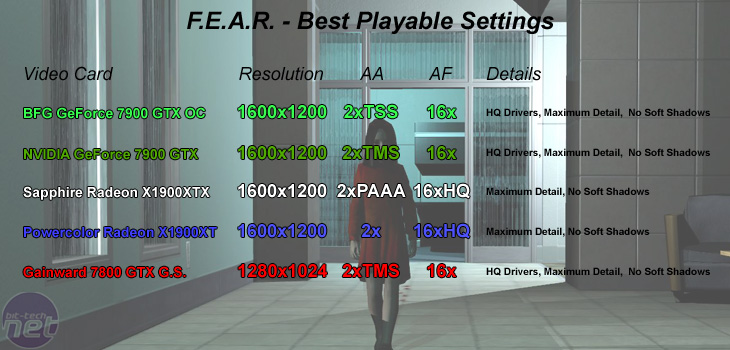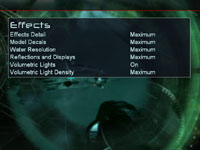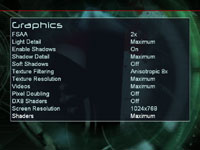F.E.A.R.
Publisher: VU GamesWe used the full retail version of F.E.A.R. patched to version 1.03. The game makes use of a lot of effects - including soft shadows, volumetric lighting, parallax mapping and particle effects, along with a slow-motion mode that really taxes today's top of the line GPU's. There's extensive use of high resolution textures. The walls are both bump mapped and parallax mapped to give a realistic feel to the brick walls that are a big feature of this title. Also, the world is incredibly destructible, which is made more realistic by parallax mapping.
In general, this is a graphically intense game and the most outstanding part of the graphics engine is undoubtedly the player character's shadow that is cast on the wall.
It also has the most advanced A.I. that we have ever seen in a game engine to date - there are times when you'll find yourself with your pants down around your ankles with no where to go. For anyone who hasn't bought this game yet, we highly recommend you do - check out our full review here.
We did a manual run-through from the "Heavy Resistance" level, between two save game checkpoints - it was a section of intense outdoor gameplay that lasted around three and a half minutes. We recorded frame over time graphs for all of our manual run-throughs because we found that the SloMo mode dropped our frame rates in to the low teens. We suspect this drop is part of Monolith's technique for slowing down the gameplay, as the game was not as jerky as the frame rate suggests.
Antialiasing and anisotropic filtering were controlled from inside the game, and thus drivers were left set to "Application Controlled".


The BFG Tech GeForce 7900 GTX OC was slightly faster and we found that we were able to increase the transparency antialiasing quality to supersampled AA. This delivered a slightly lower average frame rate, but the important thing was that the minimum frame rate was a couple of fps higher than the reference-clocked 7900 GTX's.
The Sapphire Radeon X1900XTX was as fast as the reference GeForce 7900 GTX, but the filtering quality provided some improvements in image quality. However, the game is pretty intense at times. This means that when you're actually sitting down and playing the game, you'll be pushed to notice a difference in quality when NVIDIA cards are forced to the high quality driver settings.
PowerColor's Radeon X1900XT is slightly slower than the Sapphire Radeon X1900XTX, as we were unable to apply adaptive antialiasing to the scene. However, we were still able to use ATI's high quality anisotropic filtering mode, which does help improve the image quality in this title. The minimum frame rate remained the same as Sapphire's X1900XTX, but the average frame rate was a couple of frames per second lower.
Finally, Gainward's GeForce 7800 GTX Golden Sample was able to play the game fairly well at 1280x1024 with 2 samples of transparency multisampled antialiasing and 16xAF without too many hitches. The minimum frame rate was lower than all of the other cards at 12 frames per second; however, this didn't affect the gaming experience too much. The biggest kicker was the lack of resolution in comparison to the newer, faster cards from both ATI and NVIDIA.

MSI MPG Velox 100R Chassis Review
October 14 2021 | 15:04









Want to comment? Please log in.